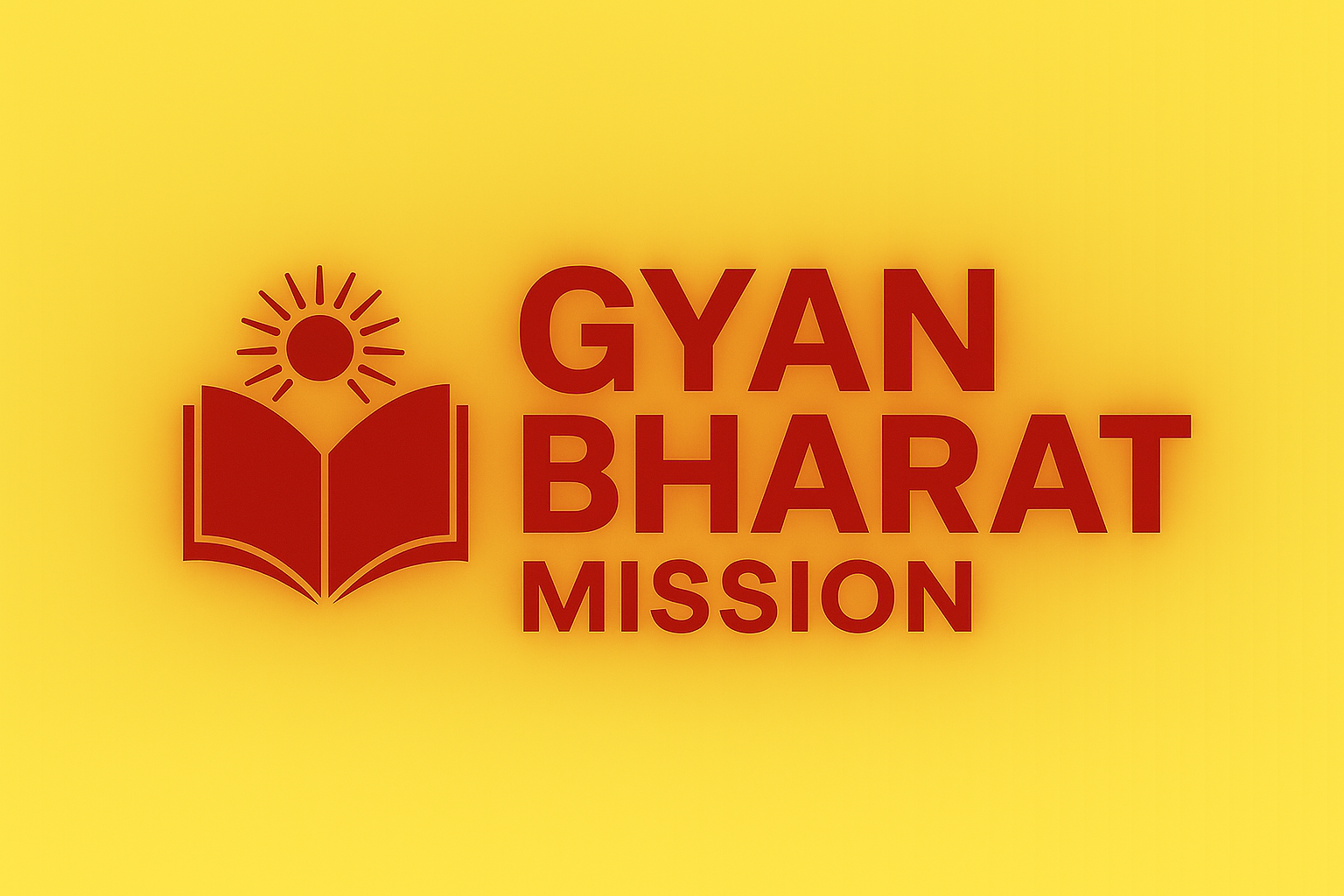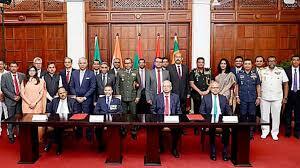Introduction
Over centuries, India’s civilizational wealth of ideas and creativity has continuously adapted—finding renewed expression in today’s digital age. From the gurukuls that nurtured generations of thinkers, to the great universities of Nalanda and Takshashila that attracted scholars from across the world, learning has been central to our civilization. This vast tradition was carefully preserved in manuscripts, monuments, and cultural practices that together form the foundation of our identity.
In this spirit, the Ministry of Culture is organising the first-ever Gyan Bharatam International Conference on “Reclaiming India’s Knowledge Legacy through Manuscript Heritage” from 11th – 13th September 2025 at Vigyan Bhawan, New Delhi. The conference will bring together over 1,100 participants, including scholars, experts, institutions, and cultural practitioners from across the country and abroad. It will create a collaborative platform for discussion, deliberation, and shaping the way forward in preserving, digitising, and sharing India’s manuscript heritage with the world.
The Gyan Bharatam Mission is being launched as a visionary national movement dedicated to preserving, digitising, and disseminating India’s vast manuscript heritage. 6 The Mission is both a tribute to our civilisational roots and a forward-looking step towards the Prime Minister’s vision of a Viksit Bharat by 2047, where India emerges as a true Vishwa Guru, combining the wisdom of its past with the innovation of its future.
Gyan Bharatam Conference
The Gyan Bharatam Conference, a landmark three-day international gathering from 11–13 September 2025 at Vigyan Bhawan, New Delhi, marks the formal launch of the Gyan Bharatam Mission. Its timing is deeply symbolic—coinciding with the anniversary of Swami Vivekananda’s historic address in Chicago in 1893, a moment that carried India’s voice of knowledge and spirituality to the global stage. In the same spirit, the conference aims to reaffirm India’s role as a civilisation of wisdom, now empowered with technology and ready to share its legacy with the world.
The conference brings together eminent dignitaries, global scholars, and cultural custodians, reflecting Prime Minister Narendra Modi’s vision of blending heritage with innovation under the spirit of “Virasat aur Vikas.” Organised in a hybrid mode, it features an inaugural and valedictory session, 4 plenary sessions, and 12 technical sessions, with participation from around 500 delegates and 75 invited experts.
Discussions centre on a wide range of themes—conservation and restoration of manuscripts, survey and documentation standards, digitisation tools and platforms, AI-driven innovations like Handwritten Text Recognition and script decipherment, translation and publication frameworks, integration with education and culture, capacity building in manuscriptology, and copyright and legal issues.
Gyan-Setu: National AI Innovation Challenge
As part of the International Conference on “Reclaiming India’s Knowledge Legacy through Manuscript Heritage”, the Ministry of Culture has launched Gyan-Setu, a National AI Innovation Challenge under the Gyan Bharatam Mission. The initiative reflects Prime Minister Narendra Modi’s vision of empowering youth and innovators to use technology for safeguarding heritage. With over 10 million manuscripts spanning subjects from philosophy and medicine to governance and the arts, the challenge aims to harness AI to make this legacy more accessible and meaningful for the world.
Vision and Objectives of Gyan Bharatam Mission
India’s cultural and intellectual legacy is reflected in its vast manuscript wealth, estimated at over five million works. These texts span a remarkable range of knowledge covering disciplines such as philosophy, science, medicine, mathematics, astronomy, literature, arts, architecture, and spirituality. Written in multiple scripts and languages, they are safeguarded across temples, monasteries, Jaina Bhandāras, archives, libraries, and private collections. Together, they form an unparalleled record of the Bhāratīya Jñāna Paramparā (Indian Knowledge Systems)10 and illustrate the continuity of India’s civilisational thought.
For the current financial year (2025–26), an allocation of Rs. 60 crore11 has been made for the Mission, which has further been approved as a Central Sector Scheme for the period 2024–31 with a total outlay of Rs. 482.85 crore.
National Mission for Manuscripts
A manuscript is a handwritten composition on materials such as palm leaf, birch bark, cloth, paper, or even metal, dating back at least seventy-five years and carrying significant historical, scientific, or aesthetic value. Unlike printed books or administrative records, manuscripts embody knowledge content, covering subjects as diverse as philosophy, medicine, astronomy, literature, and the arts. They are found in hundreds of languages and scripts, sometimes with a single language often represented in multiple scripts—for instance, Sanskrit in Devanagari, Oriya, and Grantha15.
To preserve this vast wealth, the National Mission for Manuscripts (NMM) was established in 2003 as a repository. and it has been central to safeguarding India’s intellectual traditions. The Mission has:
Developed Manus Granthavali, a software based on global metadata standards, to ensure accurate and uniform documentation. Partnered with major repositories such as the Saraswati Mahal Library (Thanjavur), Rampur Raza Library (Rampur), and the Khuda Bakhsh Library (Patna), while also bringing to light thousands of lesser-known collections across the country. Compiled more than 2,500 printed catalogues of manuscripts under its CAT-CAT (database of catalogues) initiative, ensuring even catalogued works are integrated into the national record.
This legacy now provides a strong base upon which the Gyan Bharatam Mission is building an expansive and technology-driven framework for the future16. Education and Indian Knowledge Systems under NEP 2020
The National Education Policy (NEP) 2020 strengthens the very foundations on which the Gyan Bharatam Mission rests. By encouraging teaching in the mother tongue or regional language till at least Grade 5, NEP ensures that children learn more effectively while remaining rooted in India’s linguistic and cultural traditions.
The policy also calls for the promotion of Indian languages, arts, and heritage, recognising the need to preserve what has been lost and to revitalise traditions for future generations. This vision directly aligns with the Mission’s work of protecting manuscripts as living records of India’s civilisational knowledge.
Significantly, NEP introduces Indian Knowledge Systems (IKS) into curricula, making ancient contributions in science, philosophy, medicine, and literature part of modern education. This effort resonates with Prime Minister Narendra Modi’s vision of empowering the youth to become custodians of heritage while embracing innovation. Together, NEP 2020 and the Gyan Bharatam Mission will ensure that the wisdom of the past becomes the strength of the future.







